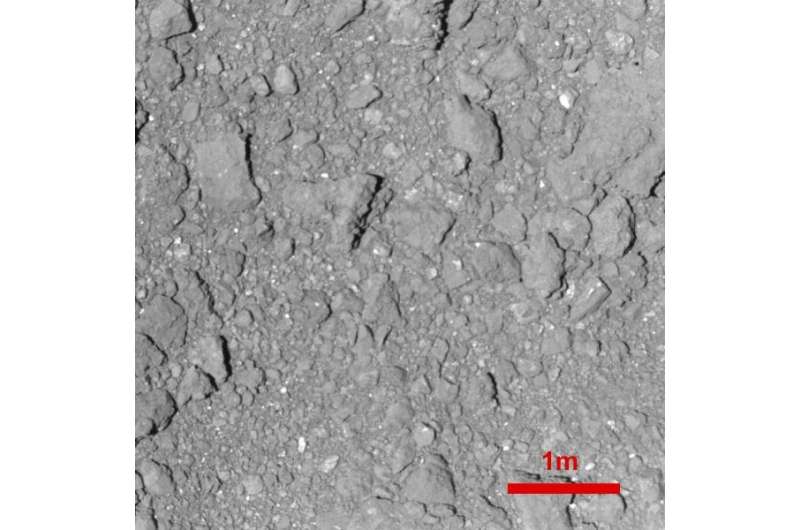Hayabusa2 team prepares for asteroid sample collection

JAXA's (Japan Aerospace Exploration Agency's) Hayabusa2 mission is on track to return samples from its target asteroid, 162173 Ryugu, a C-type Near Earth Asteroid (NEA). The past month has seen the successful deployment of two rovers and a lander. The mission focus is now on the successful retrieval and return of a surface sample.
Two members of the Planetary Science Institute's (PSI's) science staff are on the Hayabusa2 science team as part of NASA's Participating Scientist program, a cooperative effort between NASA and JAXA. Deborah Domingue is a member of both the Optical Navigation Camera (ONC) and Near Infrared Spectrometer (NIRS3) instrument teams. Lucille Le Corre is a Co-Investigator on the ONC team. Their focus, over the past several months, has been in support of data processing and analysis of Hayabusa2 data for landing site selection.
The Hayabusa2 engineering team's safety constraints restrict where the spacecraft can safely touch down. These constrains include regions of 100 meter diameter with an average slope less than 30 degrees, boulder heights less than 50 centimeters, and an absolute temperature less than 370 degrees Kelvin (97 degrees Centigrade). This limited the selection to a region plus or minus 30 degrees from the equator. The challenge of the science team was to find a region of scientific interest that meet the engineering constraints.
The biggest hurdle seems to be finding regolith in a place that is comprised of boulders less then 50 centimeters, within a 100 meter diameter region. The lack of a powdered, fine-grain regolith on asteroid Ryugu will make it difficult for the Hayabusa2 spacecraft to collect a sample to be returned to Earth.
"Unlike other asteroids we have visited, Ryugu has no powder, no fine-grain regolith. That makes selecting a place to sample more challenging," said PSI's Domingue. "We are helping characterize the surface to optimize landing site selection."
"Since the approach phase began last June, my main goal was to support the Hayabusa2 team in the preparation of touch down operations," said Le Corre. "In order to assess the sampleability of Ryugu's terrains I have worked on generating products such as ONC image mosaics and local topographic models. Our data show that the Hayabusa2 team has to carefully select a sampling site to avoid the numerous boulders present on the surface."
Domingue has been working on regolith analysis, with a focus on the photometric and spectral characterization of the surface. Le Corre has been focused on mapping the surface, combining both the geologic features with the topographic properties. The goal of the science team is to select a site that will return a sample of the least processed material, yet meet the engineering constraints.
"We need to have a very detailed understanding of the nature of the surface to be sampled in order to maximize the realization of the science goals of the mission," Domingue said.
Provided by European Space Agency





















